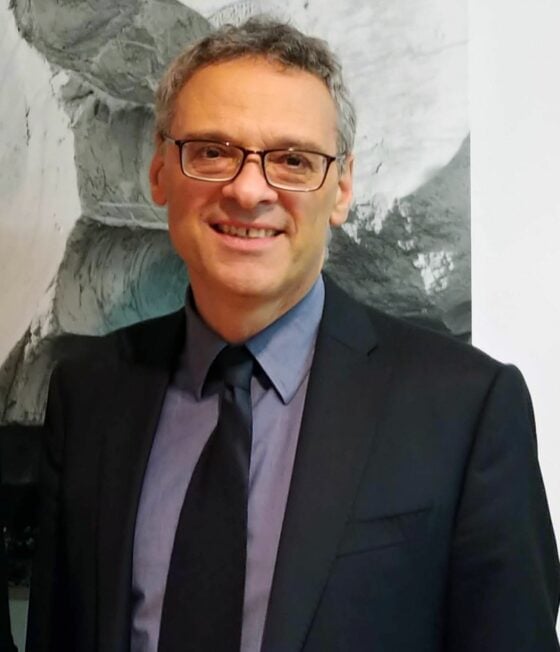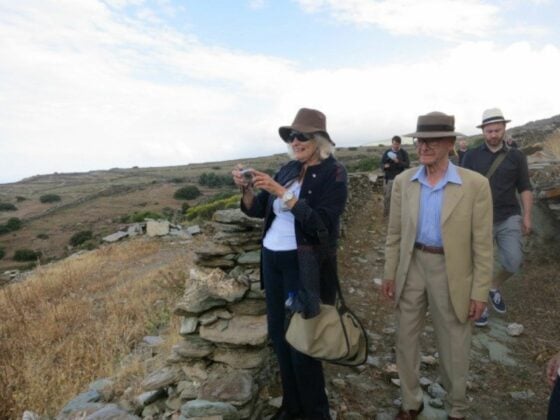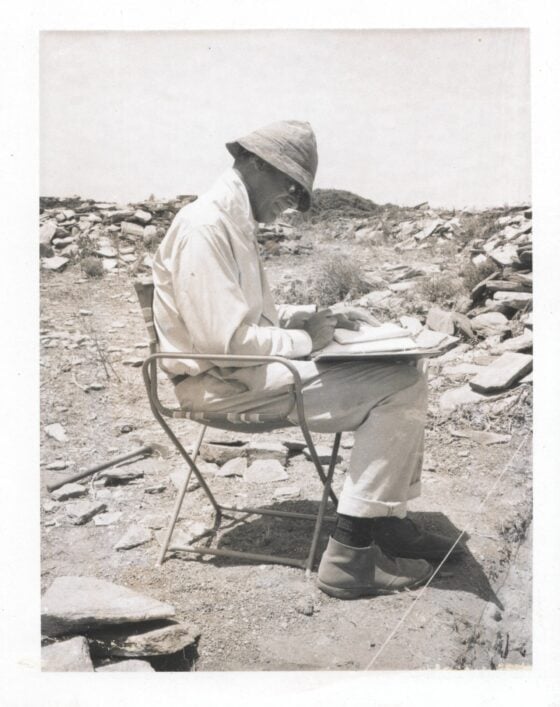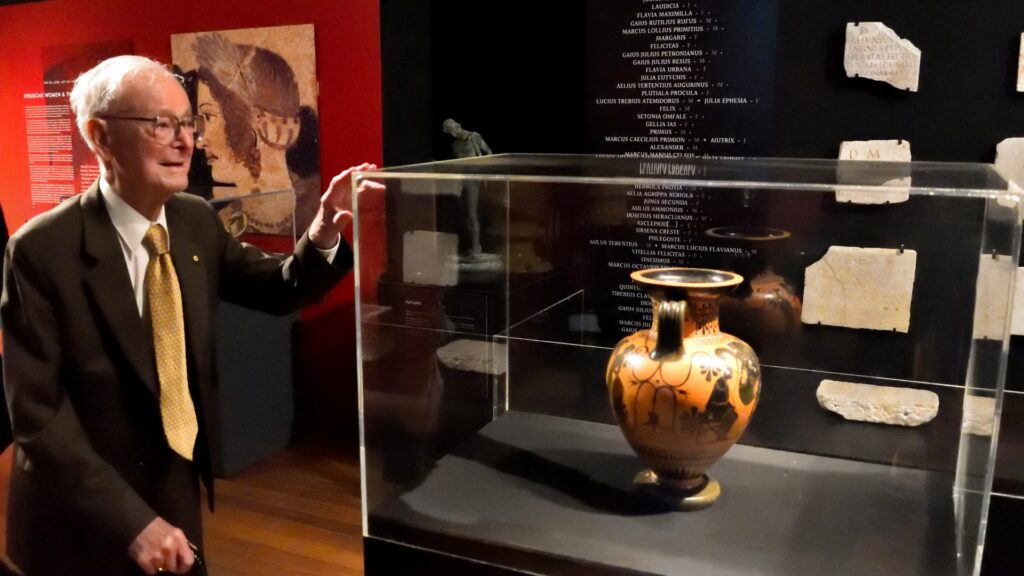In 1963, the late Alexander Cambitoglou AO was the first Greek to be appointed to a professorship at an Australian university. A professor of the University of Sydney’s Classical Archaeology department, he was famous for the dedication and rigour to his chosen field which has continued beyond his death in the form of his $6-million bequest to the university’s Australian Archaeological Institute at Athens (AAIA).
The late professor founded the institute in 1980 to promote research of the highest standards in classical archaeology and wider Greek studies. Eminent Australian archaeologists such as Macquarie University’s Associate Professor Kenneth Sheedy (director of the Australian Centre of Ancient Numismatic Studies) and Professor John K Papadopoulos (Department of Classics, University of California, Los Angeles) benefited from their experience with the Institute.
“The AAIA is a research and educational facility focused on Greek and Mediterranean studies, with an emphasis on archaeological fieldwork. The Institute provides research opportunities, scholarships and fellowships. It offers practical assistance to Australian students and scholars to further their research and to share it both nationally and internationally,” institute director told Neos Kosmos.
Dr Paspalas, who has also benefited from the AAIA programmes, said that the late professor’s bequest would be used to “firm up the AAIA and secure its future”.
“It is very generous (bequest) and the late professor, when he was devising the bequest, intended it to ensure that the AAIA would fulfil its role in promoting research of the highest standards, educating Australian students and disseminating the information to the public,” Dr Paspalas said.
READ MORE: Alexander Cambitoglou, first Greek university professor in Australia passes away at the age of 97
“I first knew of him as a teacher (at the University of Sydney) in 1981, but I really got to know him in 1984 when he invited me to take part in the institute’s dig at its Torone site in Halkidiki,” Dr Paspalas said.
The archaeological site at Torone, which dates from the Neolithic era (3300 BC), was developed by Prof Cambitoglou in the mid-1970s. The site covers various phases in history through to the Ottoman occupation.
“It (being on the Torone site) deepened my understanding of the archaeological process in how we have so much material in the Ancient World. But it is one thing to see this material in books or photographs but being on the spot and seeing it taken out (from the ground), cleaned and studies for years – it is one of the fundamentals of archaeology where it (an artefact) is best studied where it is found, which is why field work is so important,” Dr Paspalas said.
The first archaeological site that Prof Cambitoglou developed was in 1967 at Zagora on the island of Andros – a well preserved iron age settlement dating from about 900 to 700 BC. The AAIA has also facilitated sites on the island of Kythera and at Laconia in southern Peloponissos.
READ MORE: Australia Day tribute paid to Professor Cambitoglou
“We believe that what the AAIA is doing is right, not just for Sydney, but the whole of Australia as it represents universities throughout the country.”
Many students who studied classical archaeology went on to work on archaeological sites in Australia.
“Archaeology is the study of human societies, so the basic principles are the same but there are some differences between classical archaeology in Greece and archaeology in Australia.
“Greece is one of the main players in archaeology with a tradition that goes back close to two centuries and there is no lack of material to be found there ranging from the Palaeolithic to the early modern era. There are many things to learn and new scientific methods that are being applied,” Dr Paspalas said.
One example was the work of Dr Matthias Leopold of the University of Western Australia who was conducting geophysical (using radar beams) methods in central Athens what lies beneath without needing to excavate.

The institute has developed links with the Greek government to facilitate the work of Australians who want to carry out research in Greece. The institute’s membership is drawn from throughout Australia.
“Once the pandemic is over, the AAIA will again bring leading archaeologists from Greece and elsewhere to tour Australia for six weeks. This is a flagship role of the institute which also aims to promote Greek culture to Australians and not just send Australians to Greece.”
This intercultural exchange was something that motivated Prof Cambitoglou from the time he came to Australia in 1960.
“Once he came to Australia, he made it his life’s work to increase links between Greece and Australia. He felt he could have a better, freer life here and he felt at ease. He felt linked to both Greece and Australia.”
“He was first-class, he applied great vigour to his work and was a strict academic who expected high standards from everyone. He was also placed a great deal of importance in engaging with the public,” said Dr Paspalas.
To find out more about the work of the institute go to the Australian Archaeological Institute in Athens website.


Professor Alexander Cambitoglou OA
Professor Alexander Cambitoglou OA was born in 1922 in Thessaloniki. His family ran a successful commercial enterprise.
He received a good classical education and obtained a Bachelor of Arts at the University of Thessoliniki and after the Second World War he received scholarships to study Classical Archaeology in Britain. He obtained his Master of Arts from the University of Manchester, and a doctorate from the University of London. His second doctorate was from the University of Oxford. . He specialised in Ancient Greek figured pottery particularly from southern Italy and became a world expert in the field.
In the 1950s he taught in the United States, first at the University of Mississippi and then at the prestigious Bryn Mawr College in Pennsylvania.
He came to the University of Sydney in 1960 and had a great impact in raising the status of Classical Archaeology. He was also to serve as the curator of the university’s Nicholson Museum (1963-2001).
READ MORE: University of Sydney museum needs your help to identify images of a vanished Greece
Amongh many notable awards durin his career, he was made Officer of the Order of Australia in 1987 for his contributions to archaeology and international cultural relations. In 1991 he was appointed Doctor of the University – the fourth person to receive the honour.
In 1994, he was was elected a member of the Academy of Athens. In 1998, he was awarded the Order of the Phoenix.
Prof Cambitoglou donated his collection of Greek and Roman antiquities to the university, as well as his antique furniture and art collection, including works by Georges Braque, Edgar Degas, Marc Chagall, Russell Drysdale and Brett Whiteley. Many of which are on display in the Chau Chak Wing Museum.
He died aged 97, in 2019.
